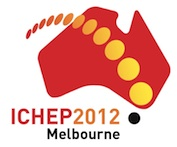Speaker
Dr
Stephen Gibson
(CERN (CH))
Description
The proton-proton collision events recorded by the ATLAS experiment are on top of a background that is due to both collision debris and non-collision components. The latter comprises of three types: beam-induced backgrounds, cosmic particles and detector noise. We present studies that focus on the first two of these. We give a detailed description of beam-related and cosmic backgrounds based on the full 2011 ATLAS data set, and present their rates throughout the whole data-taking period. Studies of correlations between tertiary proton halo and muon backgrounds, as well as, residual pressure and resulting beam-gas events seen in beam-condition monitors will be presented. Results of simulations based on the LHC geometry and its parameters will be presented. They help to better understand the features of beam-induced backgrounds in each ATLAS sub-detector. The studies of beam-induced backgrounds in ATLAS reveal their characteristics and serve as a basis for designing rejection tools that can be applied in physics analyses. Basic jet quality criteria are derived which provide high non-collision background suppression while maintaining low-signal rejection. These criteria serve as a baseline for the event cleaning procedure recommended for all ATLAS analyses. Furthermore, beam-background muon and cosmic-muon identification tools are described. They do not utilize jet quantities and therefore provide yet another independent approach to event cleaning. Performance of these tools are demonstrated with the example of the monojet search by ATLAS, where the physics signal topology can be also formed by jets faked by beam-background muons with large radiative energy loss in calorimeters.
Primary author
Dr
Fabiola Gianotti
(CERN (CH))




